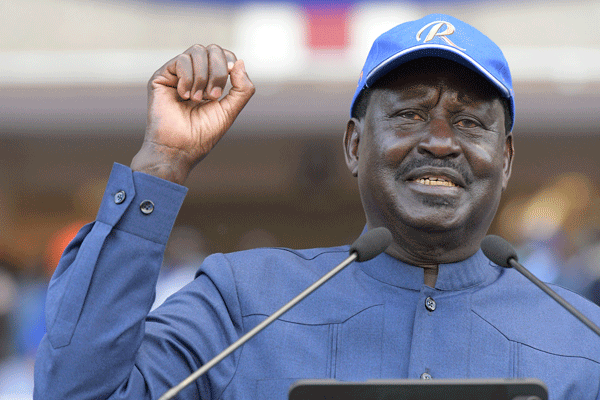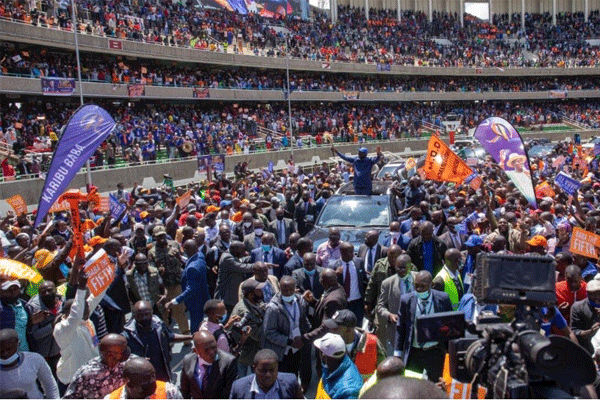Prime
From colony to Jamhuri: Kenya's journey so far

Kenya flags fly at Uhuru Gardens Park on December 11, 2021 where Jamhuri Day celebrations will be held today. Photo | NMG
What you need to know:
- That midnight on December 12, 1963, the Union Jack went down for the last time. ‘‘Kenya Free,’’ screamed Daily Nation’s headline that Thursday morning.
Jomo Kenyatta signed the declaration of independence documents, stood and shook hands with British monarch Prince Philip. When the Duke of Edinburg handed him the tools of independence, an ecstatic crowd at Uhuru Gardens – estimated to be 250,000 people – erupted in an applause and a standing ovation.
That midnight on December 12, 1963, the Union Jack went down for the last time. ‘‘Kenya Free,’’ screamed Daily Nation’s headline that Thursday morning.
After 68 years of colonial rule, Kenya was independent. A ‘‘wilderness became a thriving country’’ as the day’s presenter at BBC put it.
While Kenyans were animated about building a new nation, the country’s vulnerability was undeniable. ‘‘We must show the world…that we mean business,’’ Kenyatta assured Kenyans, and condensed his administration agenda into three priority areas: education, food security and healthcare.
But what exactly was the state of the country in 1963? With independence in the bag, focus shifted to development. To do this, Kenya needed resources. Government records show that while Kenya required £56 million (Sh6 billion) to finance education and healthcare, only about £2.5 million (Sh300 million) was available through taxation. The government had to borrow from elsewhere.
Human resource
There was also need for human resource to facilitate the country’s development agenda at a time when a majority of Kenyans were illiterate.
In 1963, only about 840,000 children were attending elementary school. The government had inherited from colonial masters an education system with an underdeveloped teaching profession. Then, there were only 21,000 teachers, most of them white. After independence, many left Kenya, further straining efforts to educate the population.
Furthermore, public schools were few and too expensive to afford for the average Kenyan. Those who had an education attended majorly European-centric schools.
Soon after becoming prime minister in 1963, Jomo Kenyatta embarked on a series of fundraisers, travelling to different parts of the country to mobilise for resources to build schools. By 1974, about 300 schools had been built through ‘‘harambees’’.
Harambee (pulling together) would also become the platform upon which leaders rallied their constituents to build health centres and voluntary community self-help projects.
Over 60 universities
In 1963, Kenya didn’t have a single university. When it was established in 1970, the Royal Technical College (now University of Nairobi) became the first institution of higher learning in Kenya. Fourteen years later, Moi University opened its doors to students. Today, Kenya has more than 60 universities.
At independence, Kenya had one PhD degree, held by Dr Julius Gikonyo Kiano, attained 1n 1956 from Columbia University. There was not a single professor in Kenya at independence, with the first two professors (Simeon Ominde and David Wasawo) attaining their professorship in 1964.
Fifty-eight years later, Kenya has about 10,000 PhD holders, with 400 new graduates annually. Even so, this is short of the target of 900 per year.
In 1963, Kenya’s population stood at 10 million people, a 36 per cent growth from the early 1950s (six million). Kenya was as ethnically diverse then as it is today, with 42 tribes of natives, a minority of European settlers and Asians.
By 1963, Nairobi had only 250,000 residents while Mombasa had 200,000 people. Less than 10,000 people lived on Eldoret at the time.
In May 1963, Kenya held its first General Election. In the elections where 1.7 million Kenyans voted for parliamentary and senate representatives, Kanu won 53 and 59 per cent of the seats respectively.




